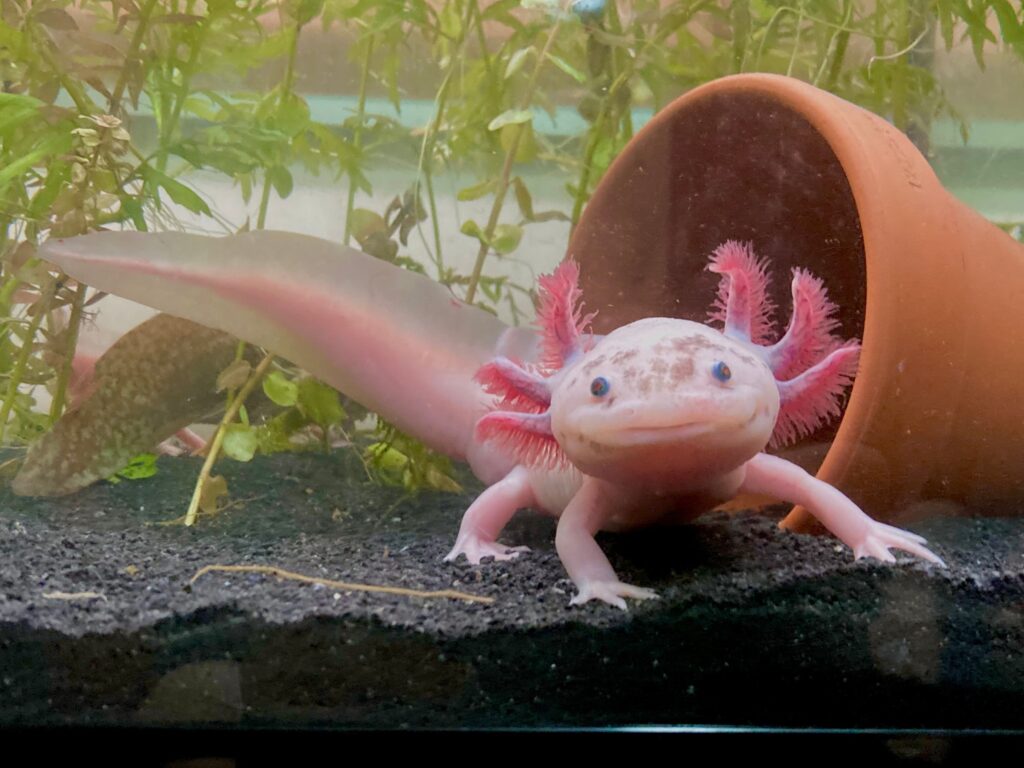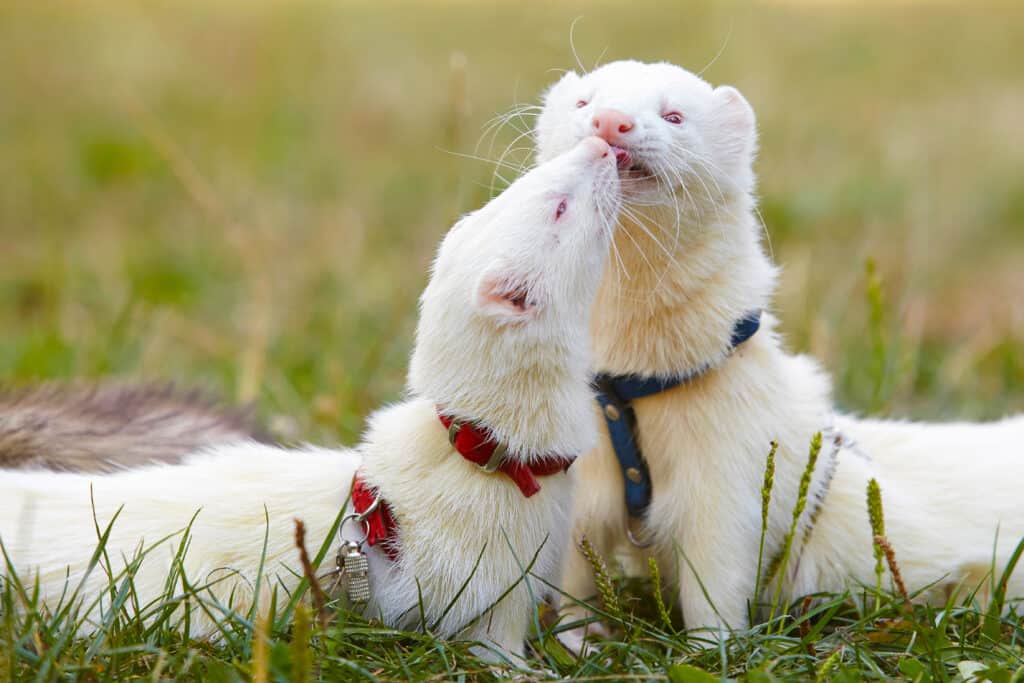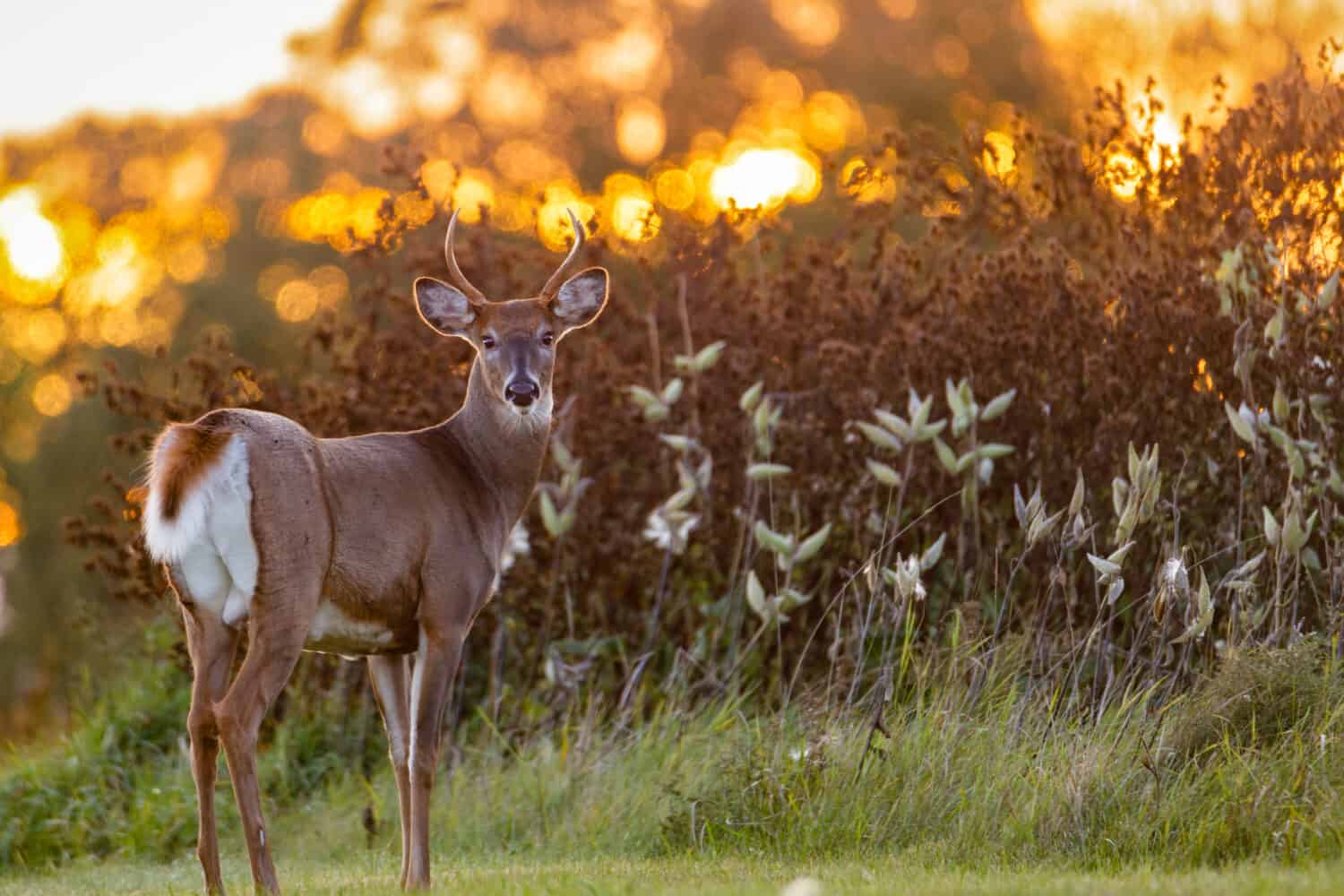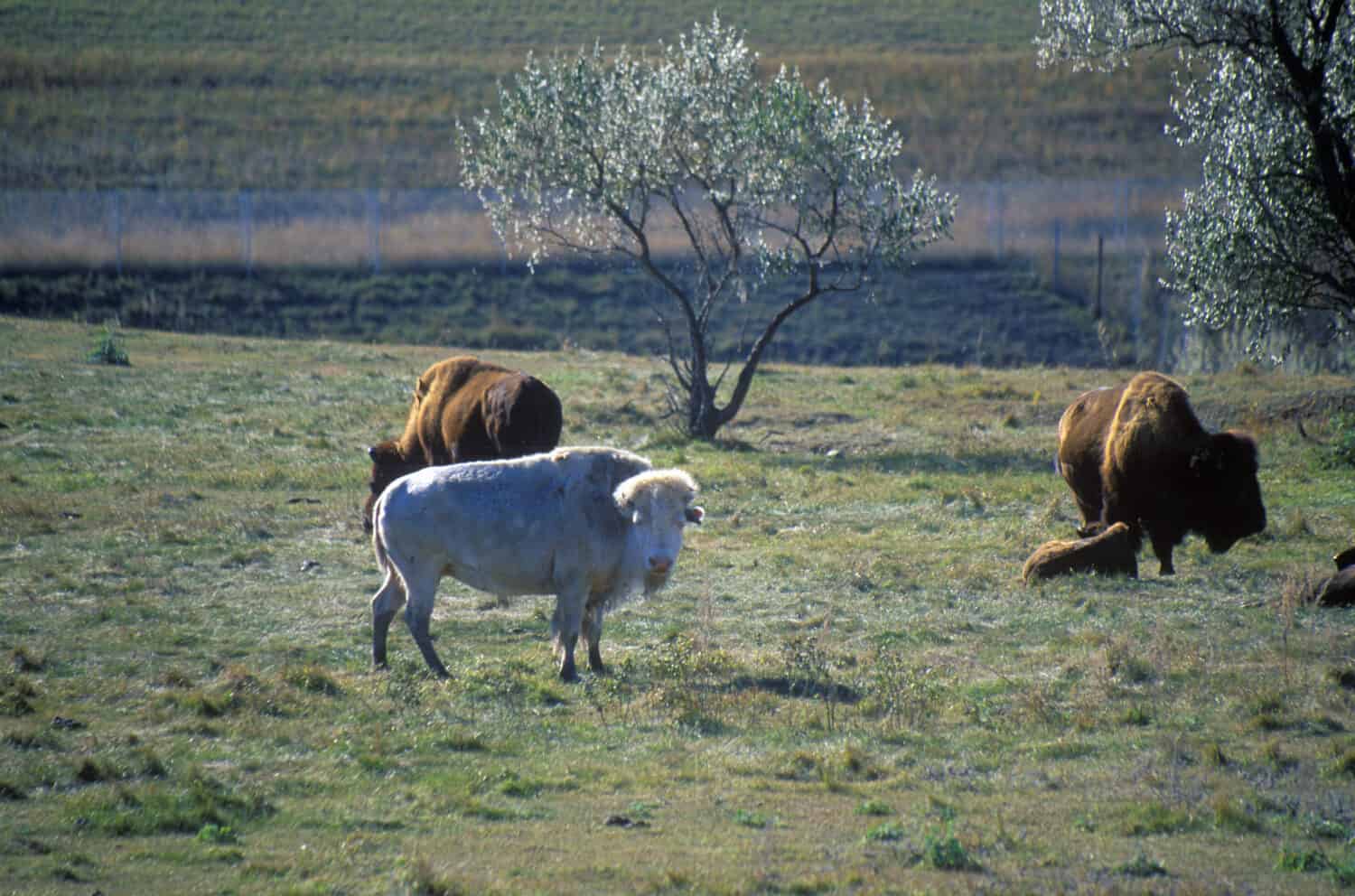Among the wonders of the animal kingdom, few things can be as perplexing as distinguishing Leucistic creatures from their albino counterparts. With both conditions showcasing a striking white coloration, it’s no wonder they often get mistaken for each other. Yet, mastering this distinction holds great importance in nature’s diversity.
So, what sets leucism apart from albinism? Leucism arises from a partial loss of pigmentation, resulting in animals having white, patchy, or pale plumage, scales, cuticles, and coats. Conversely, albino animals lack melanin—the natural pigment responsible for hair/fur, skin, and eye coloration—leaving them entirely white.
Eager to delve deeper into this fascinating subject? You’ve come to the right place! Explore our comprehensive exploration of leucism and albinism, and discover how to discern between these genetic anomalies. Gain valuable insights into some of the famous creatures living with these extraordinary conditions.
Leucistic vs Albino: Main Differences
Leucism is a genetic condition that causes a reduction in all types of pigments, not only melanin. As a result, leucistic animals have pale or white patches of fur/hair, skin, plumage, scales, or cuticles. However, the condition doesn’t affect their eyes, so they look normal.
For example, a leucistic bird might have a few white or pale feathers. But since the species still have melanin, the rest of their plumage and eyes look ‘normal.’
Albinism is a genetic anomaly caused by melanin deficiency. As so, albino animals are pale or entirely white. Because their eyes also lack pigmentation, they’re pinkish or red.

Leucism is a genetic condition that affects pigment reduction, resulting in pale or white patches on fur, skin, plumage, scales, or cuticles.
©axolotlowner/Shutterstock.com
Is Albinism More Common Than Leucism?
While albinism and leucism are inherited conditions, the latter occurs more often. The popularity of each anomaly varies from one species to another.
For instance, leucistic and albino avian creatures are sparse. Statistics show that roughly 1 in 30,000 birds are born with leucism or albinism.
Do Albinism and Leucism Affect Humans?
Albinism affects humans almost as often as it does animals. Data from the National Organization for Albinism and Hypopigmentation indicates that 1 in every 18,000-20,000 Americans is born with either of these genetic anomalies.
Contrarily, humans cannot be leucistic because their skin only has one type of pigment—melanophores, which contains melanin. Only individuals with many pigment cells are susceptible to leucism. Even so, the characteristics of some defects in humans mimic those of leucism and may be mistaken for a genetic disorder. These anomalies include:
Vitiligo
The Global Vitiligo Foundation estimates that about 70 million people worldwide have vitiligo. This autoimmune disorder typically affects the skin, leading to white patches on various body parts, including the face, hands, genitals, and feet. In some individuals, the hair may also turn silver or white. These areas usually lose their pigmentation after the body’s immune system eradicates melanocytes, which produce melanin.
Like leucism, vitiligo is hard to mask. Congenital vitiligo – where the condition presents itself at birth – is sporadic. In most cases, this disorder manifests between a person’s second and third decade of life, starting as several white patches that gradually spread across the body. The affected skin parts vary from one person to another.
Contrary to popular belief, vitiligo is not contagious. Still, individuals with this condition undergo unimaginable psychological torture due to the stigma it attracts. People tend to seclude the patients, robbing them of healthy personal and professional relationships.

Commonly affected areas include the face, hands, genitals, and feet.
©JelenaBekvalac/Shutterstock.com
Is Vitiligo a Genetic Disorder?
Sometimes, like leucism and albino, vitiligo runs in families. However, scientists believe the inheritance pattern is more complicated because different causes may bring about the condition, including genetic mutations, stress, and autoimmune diseases. Environmental factors such as exposure to harmful chemicals and ultraviolet radiation may also trigger the disorder.
Research indicates that about a fifth of people living with vitiligo have a close relative who is also affected. Notably, the disorder doesn’t discriminate against gender or race. But it’s more noticeable in individuals with darker skin tones.
Waardenburg Syndrome
This condition mirrors leucism. Waardenburg syndrome is a category of genetic disorders caused by mutations in various genes, including MITF, EDN3, PAX3, and SOX10.
Like leucism, Waardenburg syndrome affects the pigmentation of an individual’s hair and skin. However, people with this condition don’t have ‘normal’ eyes. Instead, theirs are mainly pale blue or heterochromic, meaning one could be blue and the other brown.
In most cases, Waardenburg syndrome manifests itself at birth or during an individual’s early stages. But in some rare instances, the disorder may be diagnosed at a later age. All the same, patients display these symptoms:
- Pale color skin, eyes, and hair.
- Blue eyes or heterochromia.
- Wide-set eyes.
- A white patch or gray patch of hair.
- Deafness in one or both ears.
- Slightly reduced intellectual function.
- Cleft lip (extremely rare).
- Problems straightening joints.
It’s worth mentioning that despite the complications associated with Waardenburg syndrome, people with it have a normal life expectancy. They often lead normal lives and even see all their dreams to fruition. An example of a celebrity with Waardenburg syndrome is Canadian YouTuber and video game streamer Stef Sanjati. People also speculate Paris Jackson, whose father, Michael Jackson, had vitiligo, has the same condition.
The Plight of Leucistic and Albino Individuals
Although leucistic and albino wildlife are some of the most captivating creatures in nature, their lives are far from easy. To begin with, an individual with any of these conditions sticks out like a sore thumb, putting them at a disadvantage when hiding from predators. Unfortunately, some barely even make it to adulthood for that specific reason.
Additionally, most animals with albino rarely survive in the wild due to a lack of protection from UV radiation. A great example is an albino alligator. Unaware of its condition, the reptile usually sunbathes itself to death during its early stages.
Sadly, albino individuals also experience other dire problems like cancer. For instance, the famous albino gorilla, Snowflake, died from skin cancer in 2003. In the human world, about 90% of Africans with albinism don’t live beyond 40 years; without quality healthcare, skin cancer is usually responsible for 80% of their deaths.

Albino animals in the wild often face challenges and lower survival rates due to their vulnerability to UV radiation.
©AlecTrusler2015/Shutterstock.com
Birds with Leucism and Albinism
Like other affected species, birds with albinism and leucism bear the cost of having the conditions. Besides being more vulnerable to predation than normal-plumaged individuals, they also have issues with flight. Since some or all of the creatures’ feathers lack melanin, they fray easily, making it harder for them to fly in search of food or safe shelter.
Things are even worse for albino birds, which come with pink eyes. Unlike their leucistic counterparts whose iris pigmentation is dark, the individuals have impaired vision. Regrettably, most of them die shortly after fledging.
Poaching of Albino and Leucistic Individuals
Albino and leucistic creatures have more problems to worry about than predation and health problems. The animals are poachers’ number one target, mostly because of their exotic looks. Most illegal hunters capitalize on their stunning appearances to make big bucks. Passionate poachers are more than ready to pay heftily to secure them.
Regrettably, people with albinism have a more dire situation. In some parts of Africa, these individuals are hunted for their body parts, forcing them to look over their shoulders throughout their lives.
In 2016, Amnesty International revealed that 18 people with albinism were killed in Malawi between 2014 and 2016. Some of their body parts were sold to witch doctors who believed they attracted good luck and wealth. Others – mainly women and children – are sold to sex traffickers, believing that sleeping with the individuals cures HIV/AIDS.

Illegal hunters are attracted to these animals due to their exotic appearance, making them prime targets for poaching and lucrative illegal trade.
©Couperfield/Shutterstock.com
Do Leucistic and Albino Animals Find Mates?
Landing mates is another obstacle leucistic and albino animals face. Most of these lovely creatures are excluded by their kind due to their different appearances, making it tricky to find sexual partners.
For instance, in 2020, entomologist and passionate birder John Walters revealed an albino robin couldn’t find a mate for four years because males could not recognize her. Shunned by her kind, she was forced to lead a solitary life owing to her unique coloration.
Even if some albino animals find mates, they may be sterile and can’t reproduce. It’s similar to how people with albinism struggle to find love. While some avoid getting into relationships with them, thinking they’re contagious, others fear getting offspring with the condition. But despite albinism being genetic, a child with only one carrier parent has a nearly 0% chance of being born with the disorder.
Leucistic vs. Albino: Stunning Animals to Know About
The following are examples of animals living with leucism and albinism:
3 Leucistic Wild Animals
1. White-tailed deer
Did you know the continental US is home to about 30 million white-tailed deer? Unknown to most people, about 1-2% of the world’s deer population (including the whitetails) might be leucistic. Typically, members of the family Cervidae boast reddish-brown to tan coats that usually fade to grayish-brown in the winter.
On the other hand, leucistic white-tailed deer are entirely white. Although their eyes and noses retain normal pigmentation, their hooves are translucent or white.
Notably, leucistic whitetail deer should not be confused with piebald deer. Because the piebald gene produces a small amount of melanin, the latter have patches of white, but some parts of their coats look normal.

While most deer in the Cervidae family have reddish-brown to tan coats that fade in winter, leucistic individuals have unique coloration.
©Aaron J Hill/Shutterstock.com
2. White lions
Often mistaken for albino lions, white lions are another leucistic species that should be on your radar. Two tawny parents with the recessive gene for white coat colors produce these individuals. Besides their unique white shade, everything else about them is normal, including their dark eyes.
South Africa’s Timbavati region is home to the world’s only white lions. They live in savannah grasslands like their normal-looking relatives. Since the beautiful carnivores are still apex predators, they have a fair chance of catching their prey, which includes gazelles, buffaloes, and zebras.
Sadly, white lions are now facing a serious threat of extinction because trophy hunters are out to get them. The IUCN has listed them as vulnerable species.
3. Kermode bears
Otherwise called the spirit bear, the Kermode bear is a rare species that mainly inhabits the Great Bear Rainforest in British Columbia. It’s named after the famous scientist Francis Kermode, who invested much of his life studying animals.
Kermode bears are black bear subspecies. Because they have pigmentation in their eyes and skin, they’re leucistic, not albino, like most people presume.
As of this writing, the spirit bear population is estimated to be less than 400. About 1 in every ten bears is born with leucism, or their white creamy coat color.

The bear is named in honor of the renowned scientist Francis Kermode, who dedicated a significant portion of his life to the study of animals.
©Lynn A/Shutterstock.com
3 Famous Albino Creatures
1. Migaloo the White Whale
Migaloo is a male albino humpback whale believed to have been born in 1986. Its first sighting was in 1991 in Byron Bay, Australia; today, it’s among the 30,000+ whales that migrate through the location yearly.
Migaloo is known to swim with other white humpbacks, including Willow, Bahloo, and Migaloo Jnr. Its uniqueness makes it a protected species under the Queensland and Commonwealth Government legislation. Hence, no vessels can get within at least 1,640 feet of the albino animal.
2. Alba the Orangutan
Bright blue-eyed Alba is famous for being the first and only known albino orangutan. She made headlines in 2017 when he was rescued from villagers in Borneo. Then, she was only 5, and her owner at the time claimed to have stumbled upon her in a nearby rainforest.
Alba was severely dehydrated when the Borneo Orangutan Survival Foundation (BOSF) found her. Thankfully, the organization nursed her back to health and re-introduced her to the wild in 2018. She now thrives in the Borneo rainforest, playing with her kind, including her best friend, Kika.
3. White Cloud, the Iconic Bison
Mahpiya Ska, or White Cloud, was a female buffalo born in 1996. Being an albino, she dealt with all the challenges associated with the condition, including poor eyesight and deafness. But that didn’t stop her from drawing in thousands of people who visited her regularly at North Dakota’s National Buffalo Museum, where she resided most of her life.
Regrettably, White Cloud died in November 2016 from old age. Most of her calves had standard coat colors, apart from Dakota Miracle, born in 2007. Although his coat was pure white, the buffalo wasn’t an albino like his mother, but he died in 2019 after accidentally falling into a ravine.

Mahpiya Ska, also known as White Cloud, was a remarkable albino female buffalo born in 1996.
©Joseph Sohm/Shutterstock.com
Leucistic vs Albino: All Species Matter!
We hope this comprehensive guide has broadened your knowledge of leucistic vs. albino individuals. Learning the differences between these two genetic anomalies is crucial if you’re fascinated by the members of the animal kingdom and endeavor to understand them better.
Remember that albino and leucistic animals aren’t necessarily doomed. Despite the dangers of living with these conditions, some impressively thrive in their natural habitat or sanctuaries.
Moreover, we should all take the initiative to protect species living with albinism or leucism. For example, we can raise awareness about these disorders to end the ostracism individuals with these conditions experience.
Creating safe spaces where albino and leucistic wildlife can live peacefully is also a great idea. It protects them from hunters or poachers out to catch and sell them on the illegal pet market.
The photo featured at the top of this post is © one5zero/Shutterstock.com
Thank you for reading! Have some feedback for us? Contact the AZ Animals editorial team.






